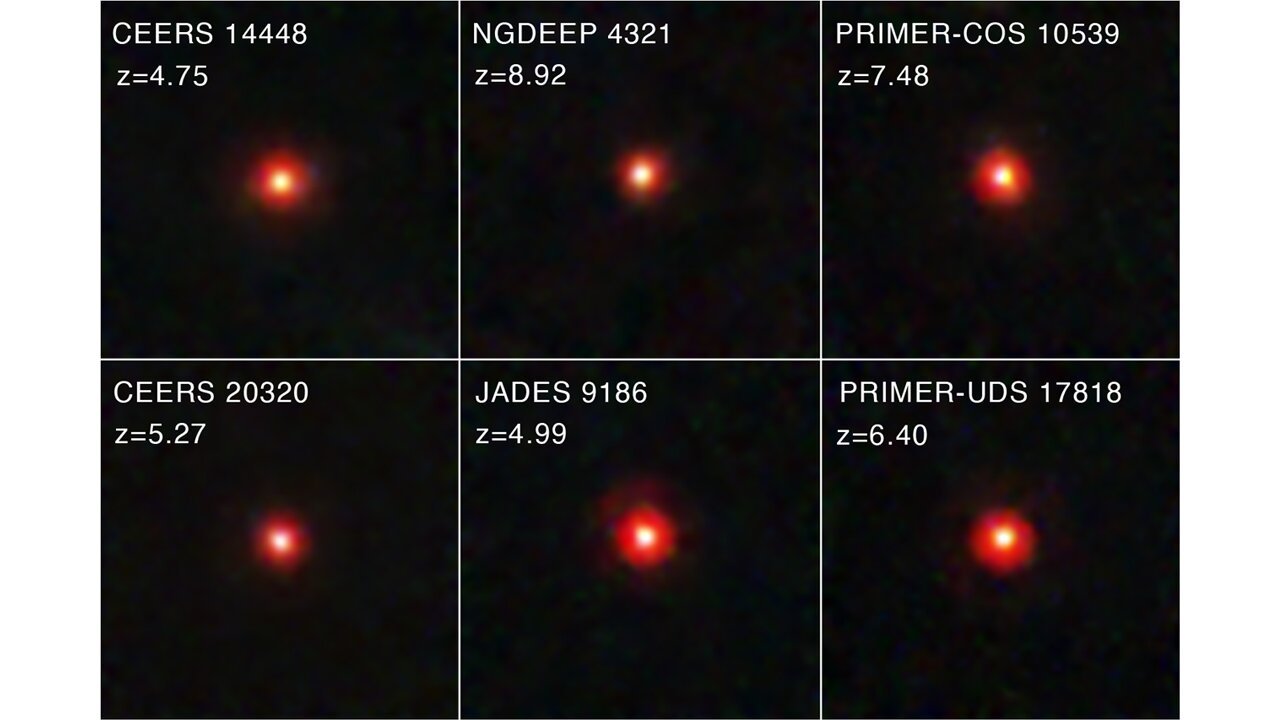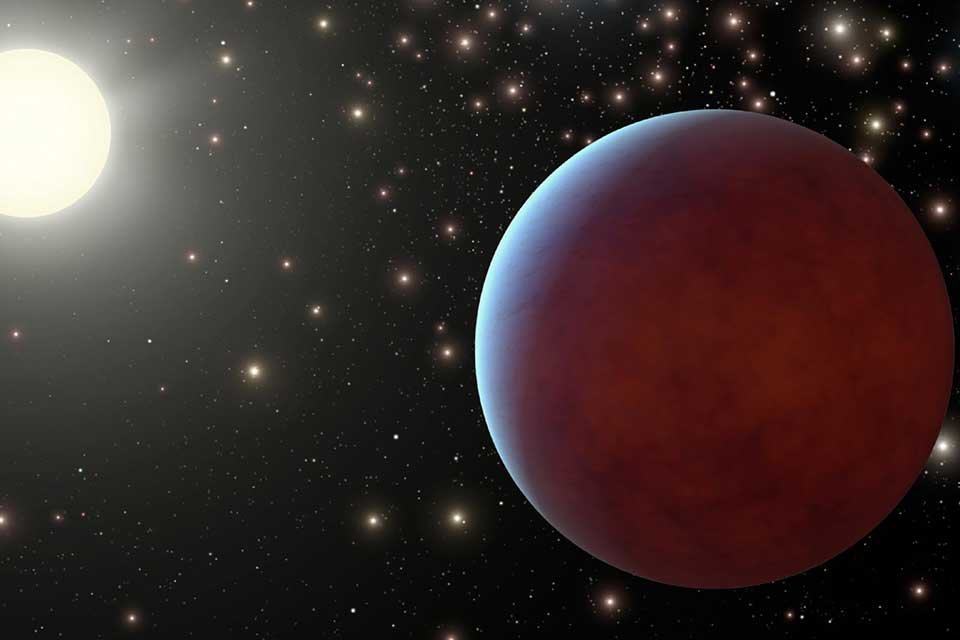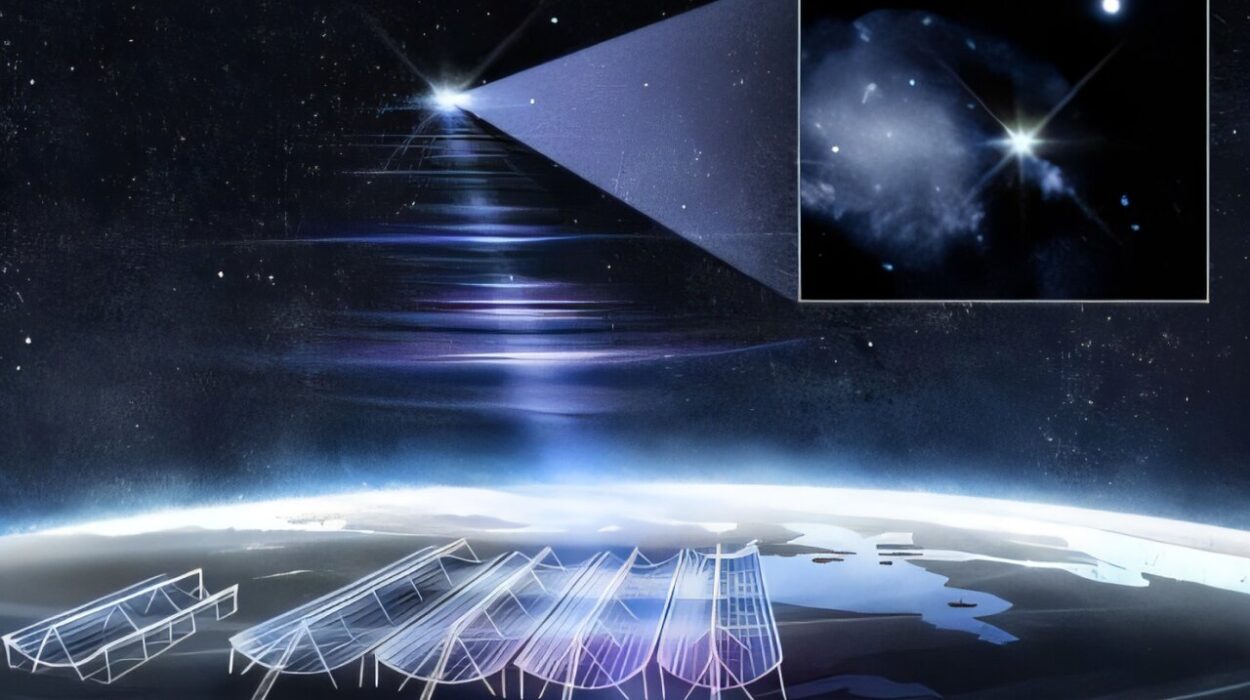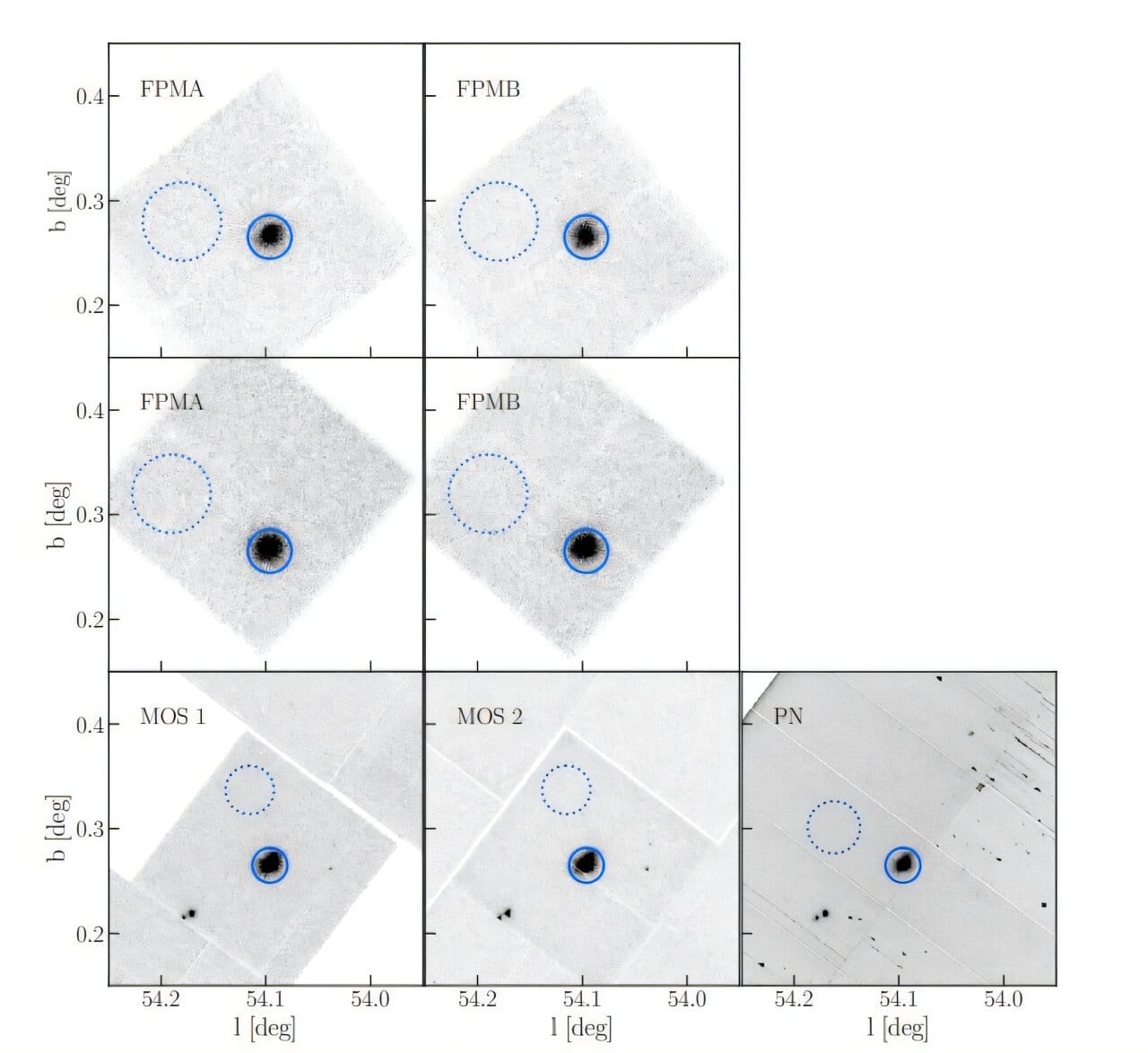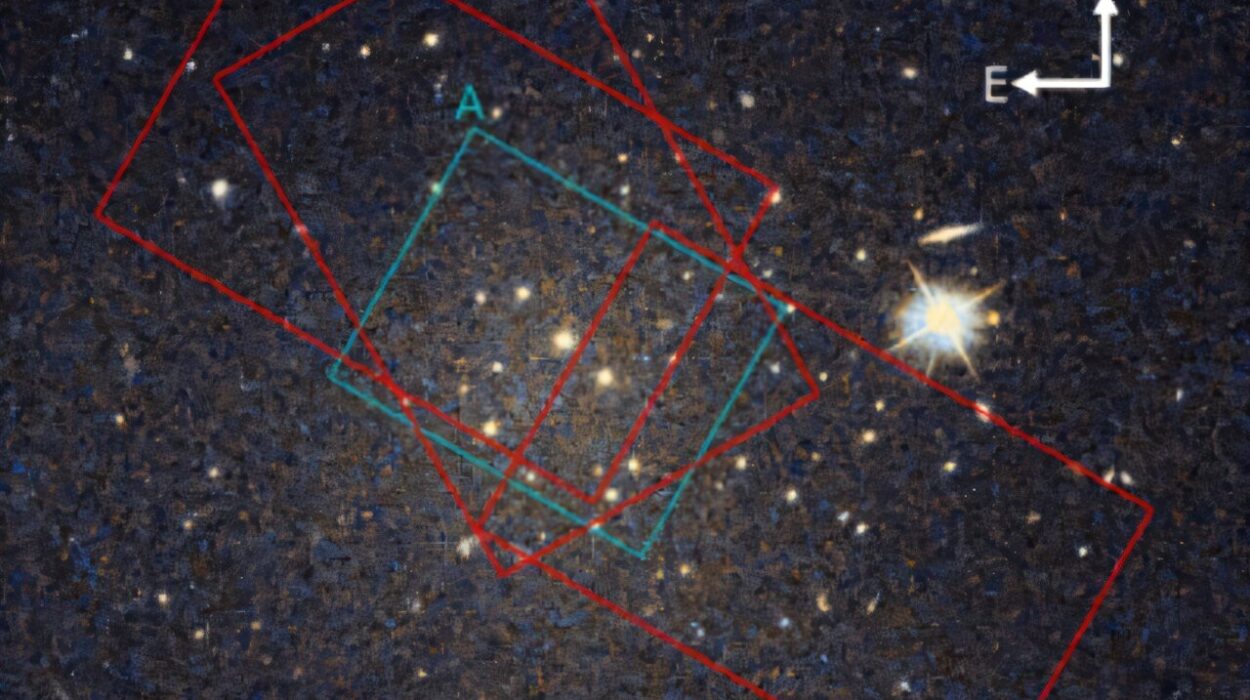In December 2022, NASA’s James Webb Space Telescope (JWST) made an astonishing discovery. Just a few months after it had begun its science operations, the telescope uncovered a class of objects never seen before—mysterious, distant red dots scattered across the vast expanse of the cosmos. These “little red dots” (LRDs) have captured the attention of astronomers, with many questions arising about their true nature, their unexpected colors, and their significance in understanding the formation and evolution of galaxies in the early universe.
What are Little Red Dots (LRDs)?
The first major discovery of the LRDs was made using JWST’s advanced capabilities, which were designed to probe the deep universe, unveiling objects far beyond the reach of previous telescopes. These red objects, though appearing small in the telescope’s field of view, were scattered across the sky, leaving researchers intrigued by their peculiar characteristics. They are identified by their red color, which suggests that they are faraway objects receding from us, exhibiting what’s known as a redshift due to the expansion of the universe.
These LRDs are predominantly located in a period that spans the first 1.5 billion years after the Big Bang. Given the profound distance these objects lie from us, they have become important tools for researchers seeking to uncover the early phases of cosmic history. The exact nature of these objects remained uncertain, making the discovery of LRDs one of the most intriguing mysteries brought to light by the Webb telescope.
Observational Findings and Methodology
In pursuit of answers, a team of astronomers, including researchers from Colby College and the University of Texas at Austin, have assembled one of the largest and most comprehensive samples of LRDs seen to date. This analysis has significantly expanded our understanding of their properties. In an effort to study these objects, the team leveraged publicly available Webb data and cross-referenced findings from various astronomical surveys, notably the Cosmic Evolution Early Release Science (CEERS) survey.
The team broadened their scope to include additional extragalactic legacy surveys like the JWST Advanced Deep Extragalactic Survey (JADES) and the Next Generation Deep Extragalactic Exploratory Public (NGDEEP) survey. By investigating sources across a wide redshift range, they began to develop a clearer picture of the origins and progression of LRDs over cosmic time. What they found was a surprising trend: LRDs seemed to emerge in abundance around 600 million years after the Big Bang but declined sharply in number as the universe reached 1.5 billion years of age.
The discovery was marked by a significant shift in thinking. Rather than being simple stellar objects or fully formed galaxies, it appeared that these red dots might be something more exotic—a potential signal that these objects might not be galaxies as previously assumed.
A Peek into the Growth of Black Holes
Perhaps the most remarkable revelation to emerge from the analysis of LRDs is the indication that many of these objects harbor actively growing supermassive black holes. This theory is supported by the observed presence of high-speed gas dynamics indicative of accretion disks—a feature of supermassive black holes that pull in and accumulate surrounding matter.
In their spectroscopic observations, the astronomers detected signs of gas rapidly orbiting some of the LRDs at speeds as high as 2 million miles per hour (roughly 1,000 kilometers per second). These findings suggest that many of the LRDs could represent active galactic nuclei (AGNs)—galaxies with a central supermassive black hole actively feeding on surrounding gas. If this hypothesis is confirmed, it would mean that LRDs are likely not young galaxies in the traditional sense but rather a fascinating stage in the formation of supermassive black holes—one that has never been clearly observed before.
Implications for Early Universe Black Hole Growth
The team’s findings contribute to an ongoing effort to trace the origins and growth patterns of supermassive black holes. Observing black holes accreting gas this early in cosmic history provides an essential clue to understanding how these massive objects evolved and grew in tandem with galaxies. In fact, about 70% of the LRDs studied by the team exhibited characteristics of accreting black holes, suggesting a period of rapid growth during an era when the universe was still relatively young.
Steven Finkelstein, a co-author of the study, explained, “The redshift distributions of these LRDs are particularly exciting. If they are indeed growing black holes, this hints at a significant phase of obscured black hole growth during the early universe, much earlier than we previously thought.”
One of the most striking aspects of the research is how the emergence and subsequent decline of LRDs fit within the broader cosmological timeline. The peak in the number of LRDs roughly 600 million years after the Big Bang aligns with the theorized onset of the epoch known as the “Cosmic Dawn,” when the first stars and black holes were forming and shaping the structure of the universe.
Debunking Cosmological Conundrums
When the LRDs were first identified, some in the scientific community proposed an alarming hypothesis: could these objects indicate that our understanding of cosmology was “broken”? The theory suggested that if the light from these red dots came predominantly from stars, the growth rate of galaxies in the early universe was too rapid, challenging current models of cosmic evolution.
However, the findings of the latest study provide significant clarification. The team suggests that the majority of the light emitted by LRDs likely originates from the accreting black holes at their cores, rather than from stars. This shifts the focus away from these objects representing oversized or ultra-fast-forming galaxies. Instead, it appears that many of these early galaxies could have been small and lightweight, populated by emerging black holes rather than fully developed stellar populations.
Anthony Taylor, a co-author of the study, expressed relief over this conclusion: “This is how you solve the ‘universe-breaking problem.’ The LRDs are not indications of unreasonably large galaxies forming too quickly—they are powered by active black holes, and that fits neatly with existing cosmological models.”
Understanding LRD Evolution: From Red to Blue?
While the research team has made significant strides in unraveling the mysteries of the LRDs, many questions remain unanswered. One particular point of intrigue lies in understanding why these objects appear redshifted, with a color indicating their tremendous distance, and why this characteristic fades after a certain time in cosmic history.
A potential theory is that the shift from red to blue in LRDs could represent a process of inside-out growth. As galaxies form, star formation typically begins at their core and then expands outward. In this process, gas from supernovas in the outer regions of the galaxy is deposited near the central supermassive black hole, obscuring it with a “cocoon” of gas and dust. Over time, this cocoon is shed as the galaxy evolves. Once exposed, the black hole is less obscured and can become bluer and more apparent in the cosmic spectrum—thereby losing the distinctive redshifted appearance associated with earlier stages of the galaxy’s development.
What About X-rays?
Another curious aspect of the LRDs is their apparent lack of brightness in X-rays, a characteristic commonly associated with actively accreting black holes at lower redshifts. However, the researchers propose a possible explanation for this. In regions where gas is densely packed near the black hole, X-ray photons emitted by the accretion disk can become trapped by the surrounding material. This phenomenon, known as “X-ray absorption,” results in the observed lack of high-energy emissions from these sources.
This feature could lend further support to the idea that these objects are in an early and heavily obscured phase of black hole growth, with only limited X-ray emission escaping from the active regions near the black hole’s event horizon.
Moving Forward: The Quest for More Answers
The study of LRDs has just begun, and much more research will be needed to fully understand these enigmatic objects. The team is actively pursuing follow-up observations, including deeper spectroscopic measurements and mid-infrared observations, to gather more data on the nature of LRDs and their relationship with early black hole growth.
“As we continue to refine our models and observations, we hope to solve the mystery of the little red dots,” said Dale Kocevski, lead author of the study. “It’s a constantly evolving field, with the potential for discovering even more revolutionary insights into the early universe.”
Reference: Anthony J. Taylor et al, Broad-Line AGN at 3.5 < z < 6: The Black Hole Mass Function and a Connection with Little Red Dots, arXiv (2024). DOI: 10.48550/arxiv.2409.06772
